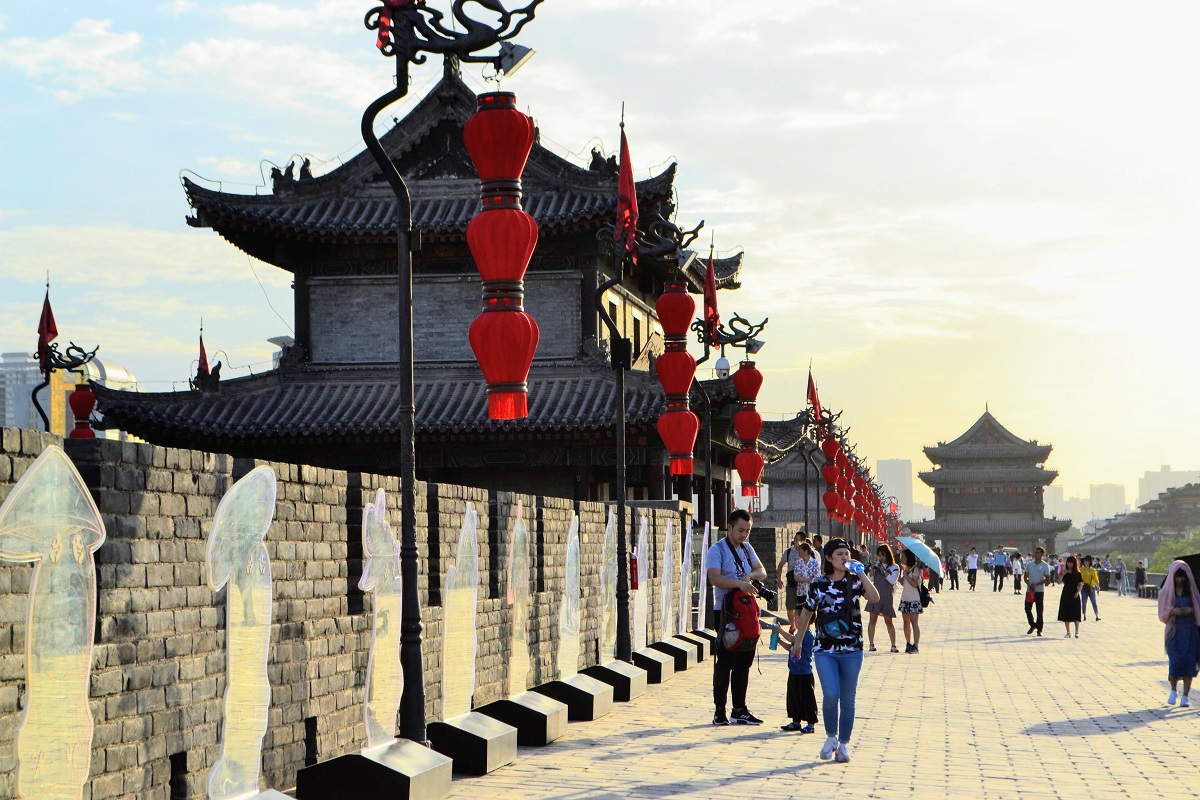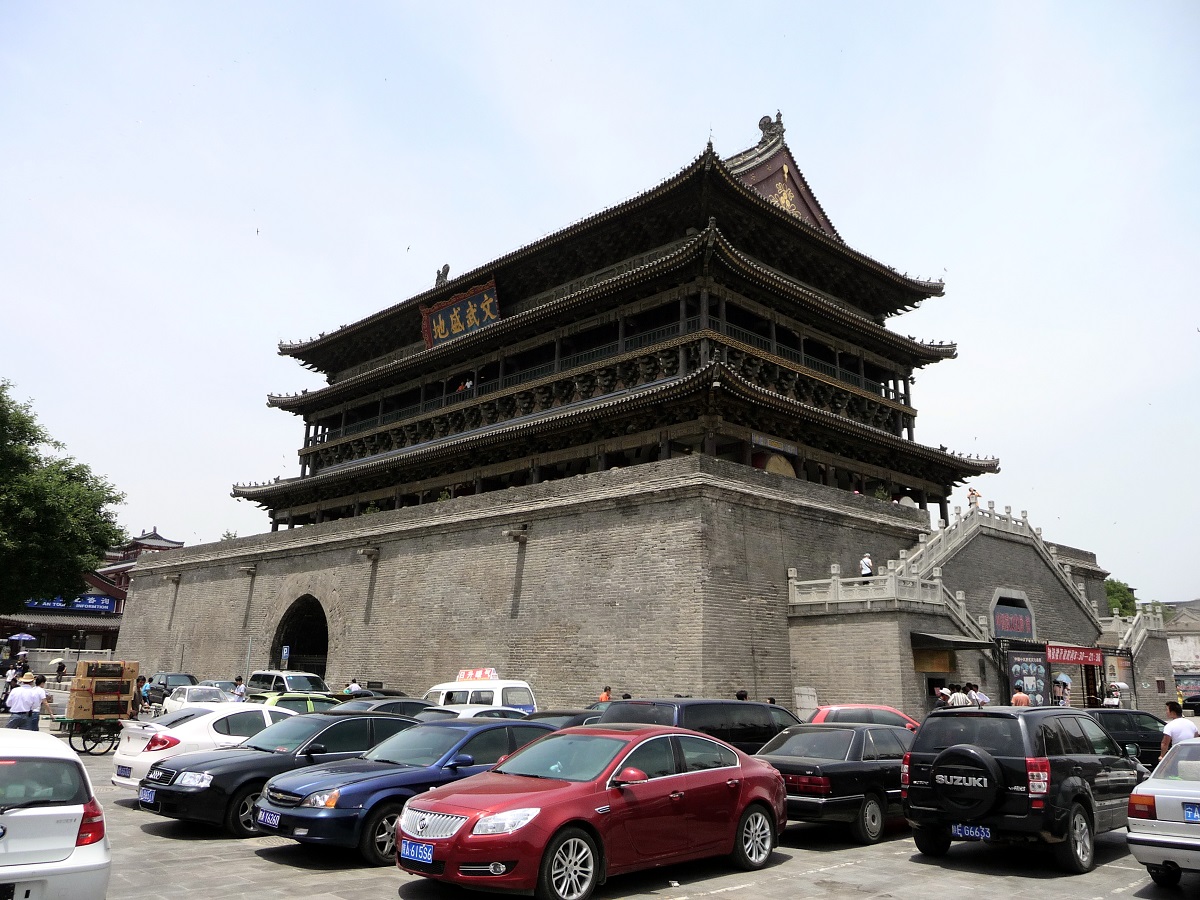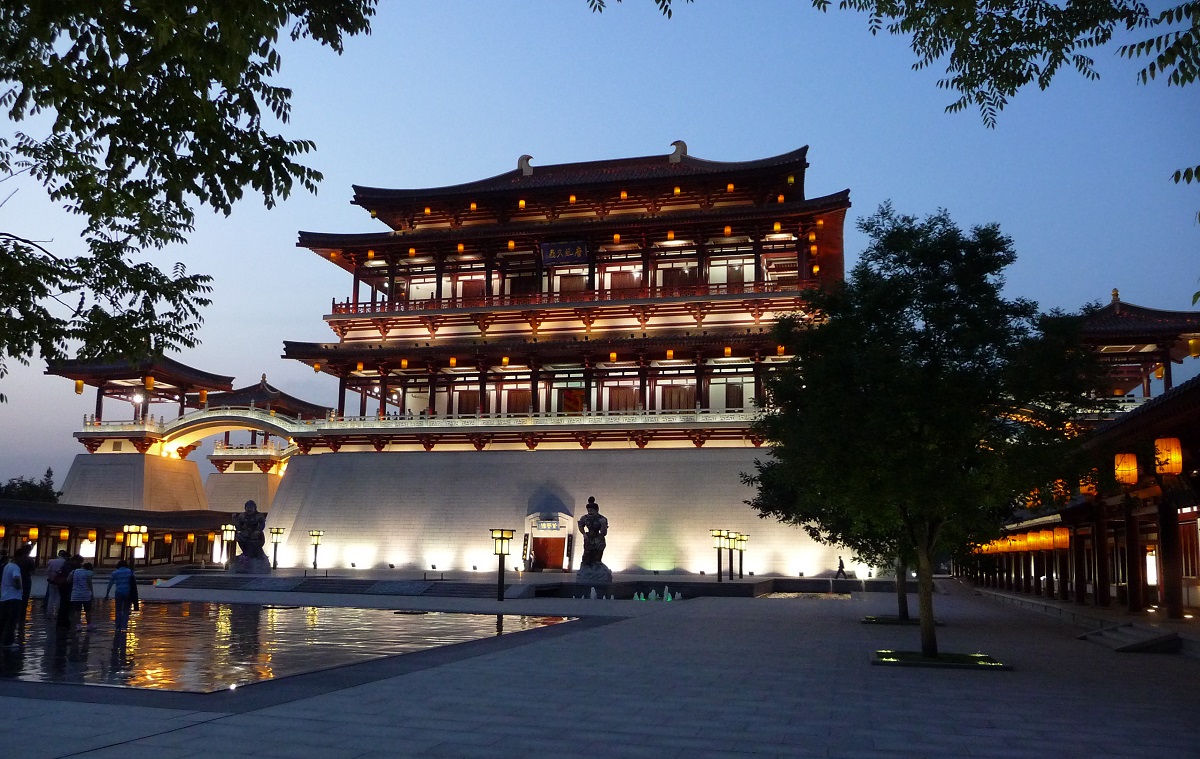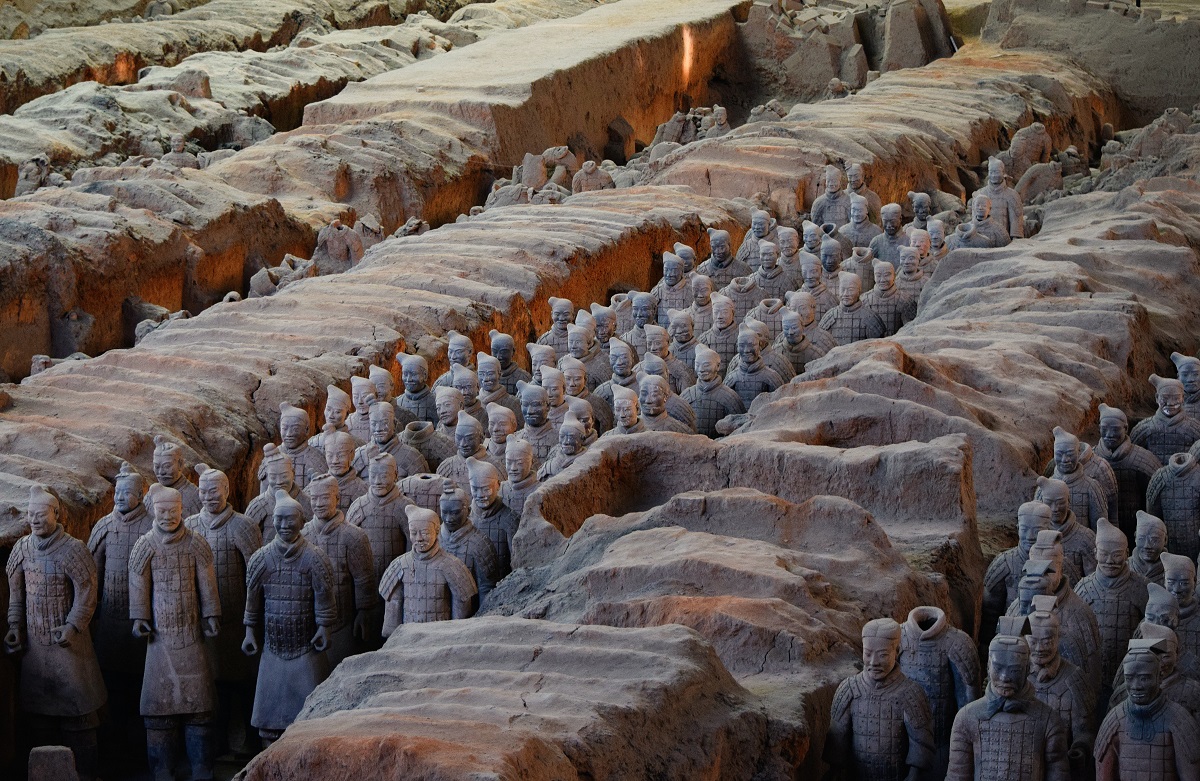Xi’an is the capital of the Chinese Shaanxi Province, and it has been the imperial capital of twelve dynasties. The city was formerly known as the Imperial City of Chang’an, meaning Constant Peace. Xi’an means the Western Peace, and the area is famous as the home of the first Qin Emperor’s amazing army of terracotta soldiers who died with the Emperor.
Distinguished finds from the city’s rich cultural background can be seen at the Xi’an museums and in the beautiful temples in the city, especially known for the two Wild Goose Pagodas. The Pagodas stand as majestic monuments of a bygone era in modern China, where modern architecture has built around the historical buildings in the last decades.
Xi’an is a major Chinese city with entertainment, shopping, restaurants and cultural events – a culture that began with the Emperor’s Court and the Silk Road that started right here and brought wealth to the city. If you want to experience something special from the prosperous time as Chang’an during the Tang emperors, it is possible in several places in the city. Tang Paradise, for example, is a unique show in a park with settings is the Tang Dynasty era.
A trip to Xi’an should also include a walking or cycling tour around the city’s old neighborhoods at the top of the rectangular city wall, where you can bike or walk all around the city center. It is a unique opportunity in a big city, and of course is the imperial tomb and terracotta army a must see as well.







The first settlement
Xi’an is considered one of the great historical capitals of China, with some of the most important dynasties ruling from here. There have been settlements in the area for hundreds of millennia, when human ancestors made up the population. The first modern humans settled in the valleys of the area about 7,000 years ago.
Dynasty Time
The culturally and politically significant role of the Xi’an was initiated with the Zhou Dynasty, which came to power in 1046 BC. Their city was the original two cities of Feng and Hao, located immediately west of modern Xi’an. In 202 BC founded the Han Emperor Liu Bang Chang’an, one of the many historical names for Xi’an, which has had its present name only since 1368, when the Ming Emperor introduced it. Before then, the city has been named Chang’an during the Han Dynasty of 206 BC, Daxing under the Sui Dynasty of 582, again Chang’an under the Tang Dynasty of 618 and several names throughout the centuries before the coming of the Ming Dynasty.
When, after hundreds of years of unrest, China was reassembled during the Sui dynasty in 582, the city continued to be the hometown of the court and thus the capital. The Sui Emperor, however, ordered a new city listed, Daxing (meaning “great progress”), to accommodate a civilian part, an imperial city, and the palace itself. The city walls enclosed 84 km² during this period, making it the largest city in the world, and especially during the subsequent Tang Dynasty the city flourished.
Culture and Commerce
One of the consequences of being an imperial city was the strengthening of cultural life, where Xi’an was for a long time the center of translation of Buddhist scriptures brought here from India, translated and stored in the city’s pagodas or carried on around the country.
By trade, Xi’an was located at the eastern end of the Silk Road, which acted as a trade route between southern Europe, the Middle East, Central Asia and China. As an imperial capital, it was like Chang’an, the city being the starting point for the caravans that slid through the harsh eastern part of the camels trade route. The travelers brought trade and wealth to the cities on the route, and thus Chang’an, which for a long time was a cosmopolitan city.
Stagnation after the Tang
With the fall of the Tang Dynasty in 907, Chang’an’s significance also diminished. Its status as a Chinese capital disappeared and with it also the wealth and privileges it brought. The city stagnated culturally and politically, but nevertheless became the regional capital and throughout the following centuries also an important trading town with its location on the Silk Road.
The Great Quake
January 23, 1556, Xi’an and its surroundings were hit by the Shaanxi earthquake, which killed about 830,000 people. The epicenter was located northwest of Xi’an, which did not experience the same devastation as several smaller towns that were almost wiped out. In Xi’an, however, there were also losses, and today the Little Pagoda of Little Wild Goat stands with its reduced height as a memorial from that time.
20th Century to Today
In 1936, the so-called Xi’an episode took place. Nationalists and communists were busy fighting each other, while Japan had captured Manchuria and created the puppet state of Manchukuo. The nationalist leader, Chiang Kai-shek, was captured by his own under the leadership of Zhang Xueliang, and in his absence, generals of the warring Chinese parties negotiated to form a Chinese unity front jointly fighting the Japanese.
In recent decades, tourism has gained a good grip on Xi’an, not least after the accidental discovery of the first Qin emperor’s terracotta army in 1974.
Overview of Xian
Xi’an is the capital of the Chinese Shaanxi Province, and it has been the imperial capital of twelve dynasties. The city was formerly known as the Imperial City of Chang’an, meaning Constant Peace. Xi’an means the Western Peace, and the area is famous as the home of the first Qin Emperor’s amazing army of terracotta soldiers who died with the Emperor.
Distinguished finds from the city’s rich cultural background can be seen at the Xi’an museums and in the beautiful temples in the city, especially known for the two Wild Goose Pagodas. The Pagodas stand as majestic monuments of a bygone era in modern China, where modern architecture has built around the historical buildings in the last decades.
About the upcoming Xian travel guide
About the travel guide
The Xian travel guide gives you an overview of the sights and activities of the Chinese city. Read about top sights and other sights, and get a tour guide with tour suggestions and detailed descriptions of all the city’s most important churches, monuments, mansions, museums, etc.
Xian is waiting for you, and at vamados.com you can also find cheap flights and great deals on hotels for your trip. You just select your travel dates and then you get flight and accommodation suggestions in and around the city.
Read more about Xian and China
Buy the travel guide
Click the “Add to Cart” button to purchase the travel guide. After that you will come to the payment, where you enter the purchase and payment information. Upon payment of the travel guide, you will immediately receive a receipt with a link to download your purchase. You can download the travel guide immediately or use the download link in the email later.
Use the travel guide
When you buy the travel guide to Xian you get the book online so you can have it on your phone, tablet or computer – and of course you can choose to print it. Use the maps and tour suggestions and you will have a good and content-rich journey.
Terracotta Soldiers • Tang Dynasty • Silk Road • Temples • City Walls
Overview of Xian
Xi’an is the capital of the Chinese Shaanxi Province, and it has been the imperial capital of twelve dynasties. The city was formerly known as the Imperial City of Chang’an, meaning Constant Peace. Xi’an means the Western Peace, and the area is famous as the home of the first Qin Emperor’s amazing army of terracotta soldiers who died with the Emperor.
Distinguished finds from the city’s rich cultural background can be seen at the Xi’an museums and in the beautiful temples in the city, especially known for the two Wild Goose Pagodas. The Pagodas stand as majestic monuments of a bygone era in modern China, where modern architecture has built around the historical buildings in the last decades.
About the upcoming Xian travel guide
About the travel guide
The Xian travel guide gives you an overview of the sights and activities of the Chinese city. Read about top sights and other sights, and get a tour guide with tour suggestions and detailed descriptions of all the city’s most important churches, monuments, mansions, museums, etc.
Xian is waiting for you, and at vamados.com you can also find cheap flights and great deals on hotels for your trip. You just select your travel dates and then you get flight and accommodation suggestions in and around the city.
Read more about Xian and China
Buy the travel guide
Click the “Add to Cart” button to purchase the travel guide. After that you will come to the payment, where you enter the purchase and payment information. Upon payment of the travel guide, you will immediately receive a receipt with a link to download your purchase. You can download the travel guide immediately or use the download link in the email later.
Use the travel guide
When you buy the travel guide to Xian you get the book online so you can have it on your phone, tablet or computer – and of course you can choose to print it. Use the maps and tour suggestions and you will have a good and content-rich journey.



Similar to Xi'an Travel Guide
There are no listings matching your search.
Reset